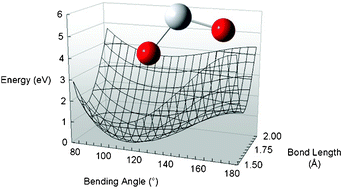A theoretical search for stable bent and linear structures of low-lying electronic states of the titanium dioxide (TiO2) molecule†
Abstract
In this work geometric optimization and potential energy surface (

* Corresponding authors
a
Institute of Atomic and Molecular Sciences, Academia Sinica, Taipei, Taiwan, ROC
E-mail:
ethene@gate.sinica.edu.tw
b Department of Applied Chemistry, National Chiao Tung University, Hsinchu, Taiwan, ROC
c
College of Chemical Engineering, Sichuan University, Chengdu, P. R. China
E-mail:
xyli@scu.edu.cn
d
College of Chemistry, Sichuan University, Chengdu, P. R. China
E-mail:
tuzheyan@gmail.com
e Center for Condensed Matter Sciences, National Taiwan University, Taipei, Taiwan, ROC
In this work geometric optimization and potential energy surface (

 Please wait while we load your content...
Something went wrong. Try again?
Please wait while we load your content...
Something went wrong. Try again?
C. Lin, J. Li, Z. Tu, X. Li, M. Hayashi and S. H. Lin, RSC Adv., 2011, 1, 1228 DOI: 10.1039/C1RA00478F
To request permission to reproduce material from this article, please go to the Copyright Clearance Center request page.
If you are an author contributing to an RSC publication, you do not need to request permission provided correct acknowledgement is given.
If you are the author of this article, you do not need to request permission to reproduce figures and diagrams provided correct acknowledgement is given. If you want to reproduce the whole article in a third-party publication (excluding your thesis/dissertation for which permission is not required) please go to the Copyright Clearance Center request page.
Read more about how to correctly acknowledge RSC content.
 Fetching data from CrossRef.
Fetching data from CrossRef.
This may take some time to load.
Loading related content
